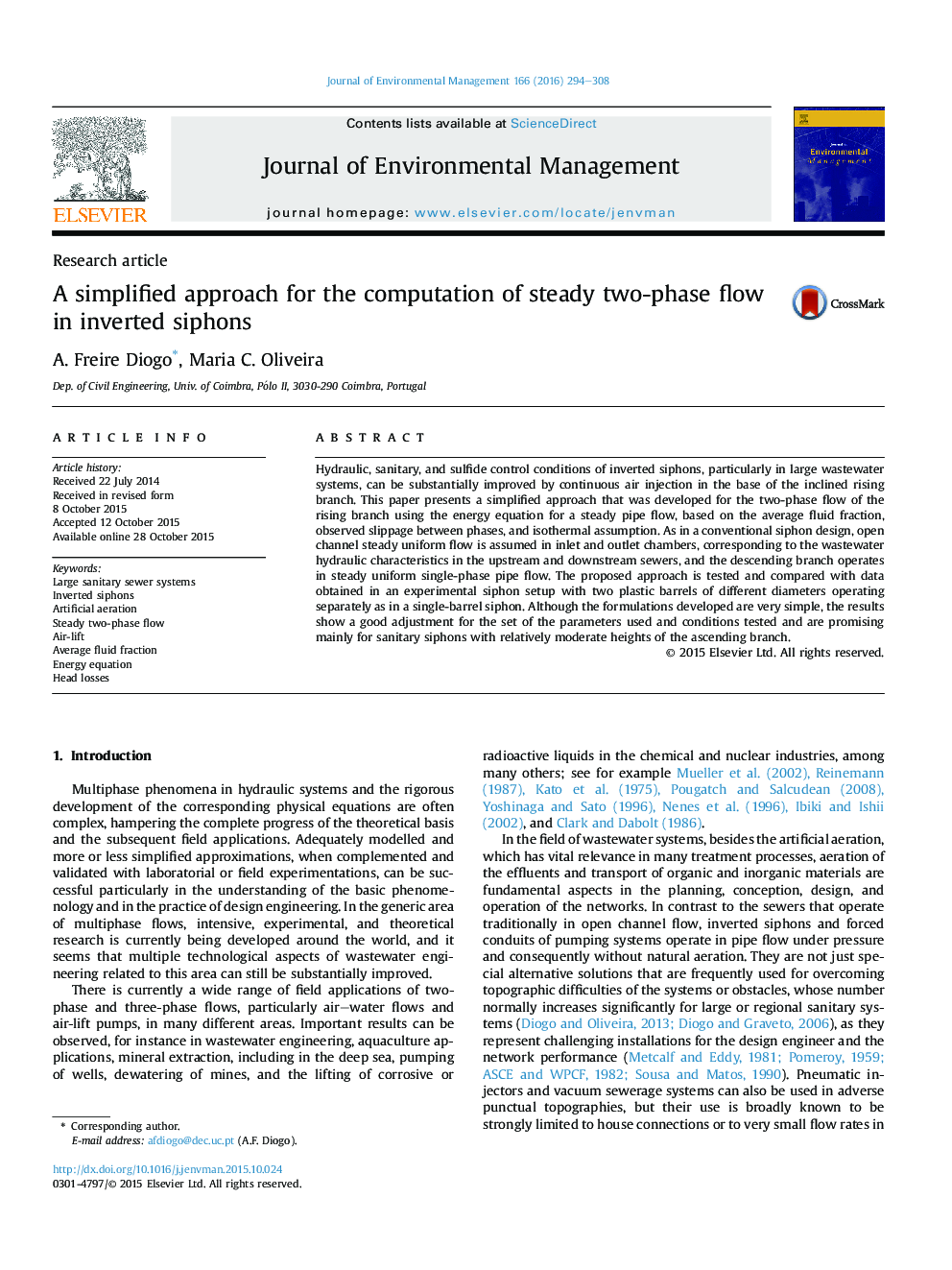| Article ID | Journal | Published Year | Pages | File Type |
|---|---|---|---|---|
| 7481386 | Journal of Environmental Management | 2016 | 15 Pages |
Abstract
Hydraulic, sanitary, and sulfide control conditions of inverted siphons, particularly in large wastewater systems, can be substantially improved by continuous air injection in the base of the inclined rising branch. This paper presents a simplified approach that was developed for the two-phase flow of the rising branch using the energy equation for a steady pipe flow, based on the average fluid fraction, observed slippage between phases, and isothermal assumption. As in a conventional siphon design, open channel steady uniform flow is assumed in inlet and outlet chambers, corresponding to the wastewater hydraulic characteristics in the upstream and downstream sewers, and the descending branch operates in steady uniform single-phase pipe flow. The proposed approach is tested and compared with data obtained in an experimental siphon setup with two plastic barrels of different diameters operating separately as in a single-barrel siphon. Although the formulations developed are very simple, the results show a good adjustment for the set of the parameters used and conditions tested and are promising mainly for sanitary siphons with relatively moderate heights of the ascending branch.
Related Topics
Physical Sciences and Engineering
Energy
Renewable Energy, Sustainability and the Environment
Authors
A. Freire Diogo, Maria C. Oliveira,
